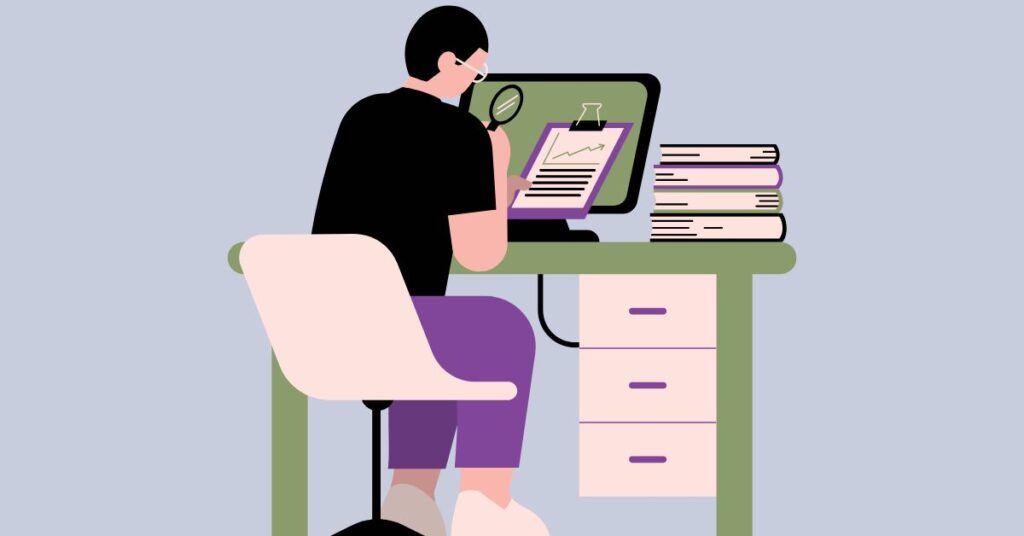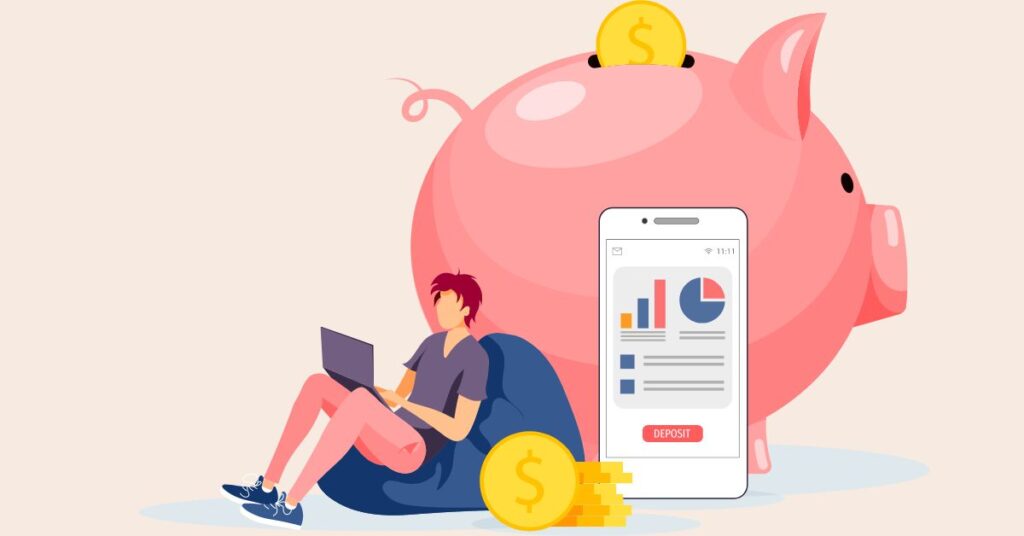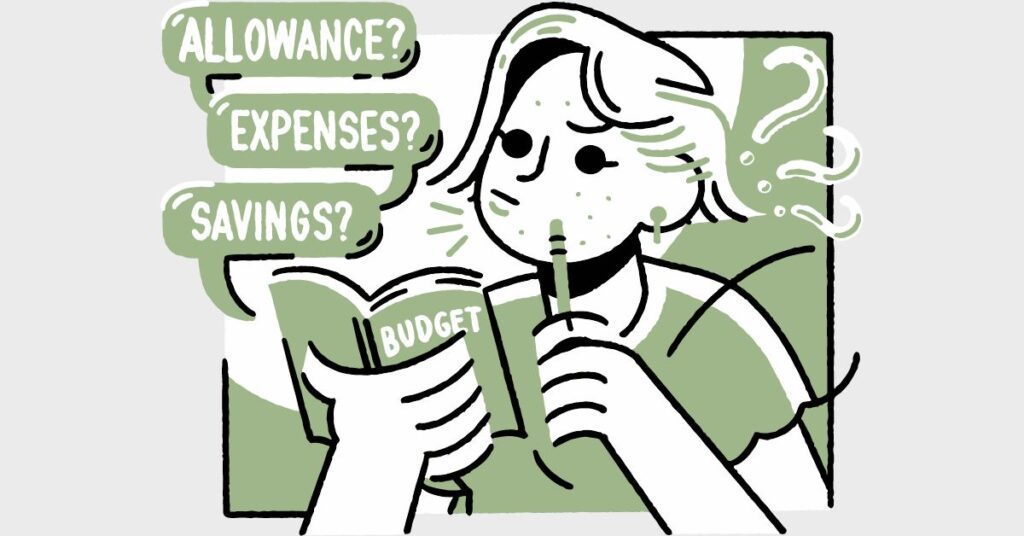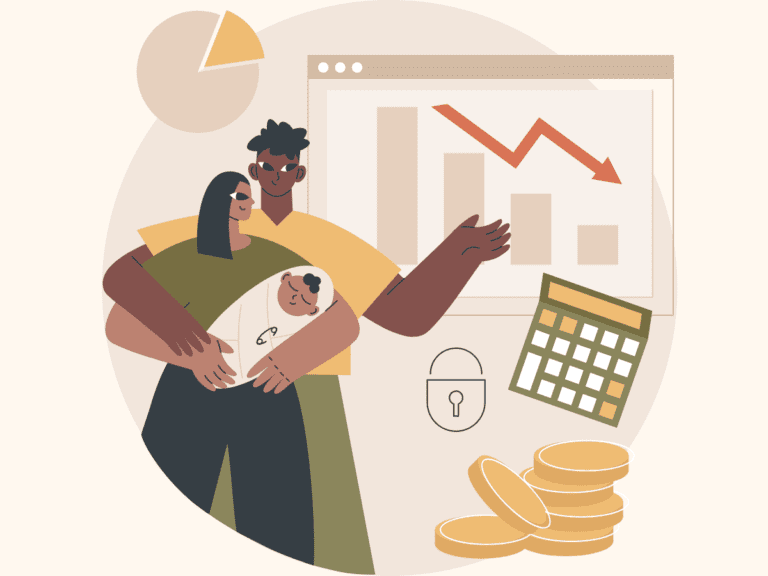7 Budgeting Tips To Positively Impact Your Money
Budgeting is one of the most important skills you can develop to improve your financial well-being. It may seem like a daunting task, but creating a budget can help you gain control over your money, reduce financial stress, and achieve your financial goals. We have 7 budgeting tips to help you manage your money well.
When you have a budget, you can see where your money is going and make informed decisions about your spending. Without a budget, you may be overspending, relying on credit cards, and living paycheck to paycheck. This can lead to financial stress and even debt.
Having a budget also allows you to prioritize your spending and make intentional decisions about how you use your money. For example, you can set aside money for necessary expenses like rent, utilities, and groceries and allocate a certain amount for discretionary spending like entertainment and dining out.
In addition, budgeting helps you plan for the future. You can set financial goals and work towards achieving them by creating a budget that aligns with your objectives. This might include saving for a down payment on a house, paying off debt, or building an emergency fund.
One practical example of the importance of budgeting is credit card debt. If you don’t have a budget, you may rely on credit cards to cover expenses. Over time, this can lead to a significant amount of debt, with high-interest rates and fees. By creating a budget, you can identify areas to reduce spending and allocate more money toward paying off your credit card debt.
Budgeting is an essential skill that can help you take control of your finances and achieve your financial goals. It may seem overwhelming initially, but with practice and patience, anyone can learn how to create and stick to a budget.

Evaluate Your Current Financial Situation – Budgeting Tips
Evaluating your current financial situation is a crucial first step in budgeting. This step involves closely examining your income and expenses to better understand where your money is going and identify areas for improvement.
To evaluate your financial situation, start by creating a list of your sources of income, including your salary, side hustles, and any investment income you may have. Next, list your monthly expenses, including your rent or mortgage payment, utilities, transportation costs, and any other bills you pay regularly. Remember to include discretionary expenses like entertainment, dining out, and shopping.
Once you have a clear picture of your income and expenses, it’s time to take a closer look at your spending habits. This can be challenging and sometimes uncomfortable, but it’s essential if you want to make positive changes to your financial situation.
Analyzing your bank and credit card statements is one practical example of evaluating your current financial situation. Look for patterns in your spending, such as recurring monthly subscriptions you don’t use or impulse purchases that add up over time. Once you have identified areas where you can cut back, you can adjust your budget accordingly.
Another way to evaluate your financial situation is to calculate your debt-to-income ratio. This ratio measures the amount of debt you have compared to your income. Ideally, you want to keep your debt-to-income ratio below 36%. If your ratio is higher than that, it may be time to prioritize paying down your debt.
Evaluating your current financial situation is essential in creating a budget that works for you. It allows you to better understand your income and expenses, identify areas for improvement, and make informed decisions about your spending. By taking the time to evaluate your financial situation, you can set yourself up for financial success in the future.

Set financial goals
Setting financial goals is the next step in creating a budget that can work for any budget. Financial goals are important because they give you a clear direction to work towards and help you stay motivated and focused.
When setting financial goals, it’s essential to start by identifying short-term and long-term objectives. Short-term goals are those you can achieve within a year or less, while long-term goals may take several years to complete.
One practical example of a short-term financial goal is building an emergency fund. This fund should cover 3-6 months of living expenses and help you feel more secure in case of unexpected expenses or a job loss. You can start by setting a specific amount of money you want to save each month and then adjust your budget to make it happen.
A long-term financial goal might be to save for retirement. Retirement may seem far away, but it’s never too early to start saving. One way to do this is to set up a 401(k) or IRA account and contribute a portion of your monthly income. Starting early, you can take advantage of compound interest and grow your retirement savings over time.
When setting financial goals, it’s also important to prioritize them. This means deciding which goals are most important and focusing your energy and resources on achieving them. For example, if you have credit card debt with high-interest rates, it may be a good idea to prioritize paying off that debt before focusing on other goals.
Setting financial goals is essential in creating a budget that works for you. By identifying and prioritizing short-term and long-term goals, you can stay motivated and focused on achieving your financial objectives. Practical examples of financial goals include building an emergency fund, saving for retirement, paying off debt, and saving for a down payment on a house.

Create a budget – Budgeting Tips
Creating a budget is essential to managing your finances and achieving your goals. A budget is a plan that outlines your income and expenses and helps you stay on track with your spending.
To create a budget, start by calculating your total income. This includes any money you receive from your job, side hustles, investments, or other sources. Next, list your monthly expenses, including rent or mortgage payments, utilities, transportation, and other bills. Remember to include discretionary expenses like entertainment, dining out, and shopping.
Once you have a clear picture of your income and expenses, it’s time to create a budget plan. This involves allocating your income towards different categories of expenses, such as housing, transportation, food, and savings.
One practical example of creating a budget is using a budgeting app or spreadsheet to track your spending. These tools allow you to categorize your expenses and see where your money goes. You can then use this information to identify areas where you can cut back and adjust your budget accordingly.
Another way to create a budget is to use the 50/30/20 rule. This rule suggests allocating 50% of your income towards essential expenses like housing and utilities, 30% towards discretionary expenses like entertainment and dining out, and 20% towards savings and debt repayment.
When creating a budget, it’s essential to be realistic and flexible. Don’t be too hard on yourself if you overspend in one category or if unexpected expenses arise. Instead, use these experiences as learning opportunities and adjust your budget accordingly.
Creating a budget is essential in managing and achieving your financial goals. By tracking your income and expenses, allocating your money towards different categories, and being flexible and realistic, you can create a budget that works for any budget. Practical examples of creating a budget include using a budgeting app or spreadsheet and using the 50/30/20 rule.

Reduce expenses
Reducing expenses is crucial in creating a budget that works for any budget. When you spend less on unnecessary things, you can allocate more towards your financial goals and build a stronger financial foundation.
The first step to reducing expenses is identifying areas where you can cut back. One practical example is to review your monthly bills and see if there are any services you don’t need or can be replaced with cheaper alternatives. For instance, consider cutting cable and switching to a streaming service or negotiating a lower rate for your phone or internet bill.
Another way to reduce expenses is to limit discretionary spending. This includes things like eating out, shopping, and entertainment. While it’s important to enjoy life and treat yourself, spending on these areas can quickly add up and strain your budget. Instead, try setting a monthly limit on these expenses or finding free or low-cost alternatives.
Another practical example of reducing expenses is to consider your transportation costs. If you have a car, consider reducing gas expenses by carpooling or taking public transportation. Alternatively, consider walking or biking to work if feasible.
When it comes to reducing expenses, it’s important to be mindful of your spending habits and make changes that work for you. This might mean starting small and gradually making more significant changes over time.
Reducing expenses is integral to creating a budget that works for any budget. By identifying areas where you can cut back, limiting discretionary spending, and being mindful of your transportation costs, you can free up more money to put toward your financial goals. Practical examples of reducing expenses include reviewing your monthly bills, limiting discretionary spending, and considering your transportation costs.

Increase your income – Budgeting Tips
Increasing your income is another crucial step in achieving your financial goals and building a stronger financial foundation. While reducing expenses is a great way to free up money in your budget, increasing your income can help you achieve your financial goals faster and give you more financial security.
One practical example of increasing your income is negotiating a raise at your job. This might involve discussing your contributions to the company, outlining your accomplishments, and making a case for why you deserve a higher salary. Alternatively, consider taking on additional responsibilities or seeking out higher-paying job opportunities.
Another way to increase your income is to start a side hustle or freelance work. This can include anything from selling goods online to offering your services as a consultant or freelancer. You can supplement your income and build a diverse revenue stream by monetizing your skills and interests.
Investing is another way to increase your income over time. While investing does involve some risk, it can also be a powerful way to grow your wealth and generate passive income. Consider speaking with a financial advisor or doing your own research to identify investment opportunities that align with your financial goals and risk tolerance.
When it comes to increasing your income, it’s essential to be strategic and patient. Building a successful career or side hustle takes time and effort, but with perseverance and dedication, you can create opportunities for yourself to grow your income over time.
Increasing your income is vital to achieving your financial goals and building a stronger financial foundation. Practical examples of increasing your income include negotiating a raise, starting a side hustle or freelance work, and investing. Being strategic and patient can create opportunities to grow your income and achieve financial security.

Use tools to help you Budget.
Using tools to help you budget is an effective way to stay on top of your finances and achieve your financial goals. In today’s digital age, many online tools and apps can help you track your spending, create a budget, and monitor your progress toward your financial goals.
One popular budgeting tool is a budgeting app. These apps allow you to track your expenses, set spending limits, and receive alerts when you exceed your budget. Some budgeting apps categorize your expenses automatically, making it easy to see where your money goes each month. Examples of popular budgeting apps include Mint, Personal Capital, and YNAB (You Need A Budget).
Another valuable tool for budgeting is a financial tracker spreadsheet. This can be created using software like Microsoft Excel or Google Sheets. A financial tracker spreadsheet allows you to track your income and expenses, monitor your progress toward your financial goals, and create customized budget categories. A financial tracker spreadsheet can create a budget tailored to your unique financial situation.
Consider using online resources like financial blogs or YouTube channels. These resources often offer practical tips and advice on budgeting, saving, and investing. By educating yourself on personal finance topics, you can make more informed financial decisions and achieve your goals faster.
When using tools to help you budget, choosing the tools that work best for you is essential. Experiment with different budgeting apps and financial tracker spreadsheets to find the one that fits your needs and preferences. And don’t be afraid to seek additional resources to help you stay motivated and on track toward your financial goals.
Using tools to help you budget is an effective way to stay on top of your finances and achieve your financial goals. Practical examples of budgeting tools include budgeting apps, financial tracker spreadsheets, and online resources. By experimenting with different tools and seeking additional help, you can create a budget that works for any budget and achieve financial security.

Review and adjust your budget.
Once you have created a budget, it’s important to review and adjust it regularly to ensure that it continues to work for you and help you achieve your financial goals. Reviewing and adjusting your budget helps you identify areas where you might be overspending and where you can allocate more funds to achieve your financial goals.
One practical example of reviewing your budget is to look at your monthly expenses and identify any areas where you might be overspending. This could include dining out too frequently, paying too much for subscriptions, or not shopping around for the best deals on necessary expenses. Once you’ve identified areas where you might be overspending, you can adjust your budget by cutting back on those expenses.
Another practical example of adjusting your budget is to revisit your financial goals and determine if you need to allocate more or less money toward them. For instance, if you’re saving for a down payment on a house and have recently received a raise, you might decide to allocate more funds toward your monthly down payment savings goal. Alternatively, if you’ve achieved one of your financial goals and no longer need to allocate as much money towards it, you might redirect those funds towards another financial goal.
It’s also vital to review and adjust your budget whenever there’s a change in your financial situation. This might include a change in income, an unexpected expense, or a change in your living situation. Regularly reviewing and adjusting your budget, you can stay on top of your finances and ensure you’re always working towards your financial goals.
Reviewing and adjusting your budget is essential in achieving your financial goals and building a more robust financial foundation. Practical examples of reviewing and adjusting your budget include identifying areas where you might be overspending, revisiting your financial goals, and adjusting your budget whenever there’s a change in your financial situation. Regularly reviewing and revising your budget, you can stay on top of your finances and achieve financial security.

Things to remember when budgeting
Budgeting is an essential aspect of managing your personal finances. It can help you gain control of your spending, save for critical financial goals, and reduce financial stress. However, budgeting can be challenging, especially when you’re just starting. Here are some things to remember when budgeting:
- Be realistic: When creating a budget, it’s essential to be realistic about your income and expenses. Don’t overestimate your income or underestimate your expenses, as this can lead to an unrealistic budget that’s difficult to follow. Consider all your expenses, including variable expenses such as groceries, entertainment, and transportation.
- Track your spending: To create an accurate budget, you need to know how much you’re spending. Track your spending for a month or two to get an idea of where your money is going. You can use budgeting apps, spreadsheets, or pen and paper to track your spending.
- Prioritize your expenses: When you’re budgeting, it’s crucial to prioritize your expenses. Focus on your essential expenses, such as housing, utilities, and food, before allocating money to non-essential expenses. Make sure you allocate enough money to cover your basic expenses and save for your financial goals.
- Be flexible: Your budget should be flexible and allow for unexpected expenses. Unexpected expenses can include car repairs, medical bills, or emergency travel. Make sure you have some room in your budget for these unexpected expenses.
- Review and adjust your budget regularly: Your budget should be a living document you review and adjust regularly. As your income and expenses change, you may need to adjust your budget accordingly. Reviewing your budget can help you stay on track and achieve your financial goals.
- Stay motivated: Budgeting can be challenging, and it’s easy to lose motivation. Stay motivated by reminding yourself of the benefits of budgeting, such as reducing financial stress and achieving your financial goals. Celebrate your successes, and don’t be too hard on yourself if you slip up occasionally.
In conclusion, budgeting is a critical aspect of managing your personal finances. Remember to be realistic, track your spending, prioritize your expenses, be flexible, review and adjust your budget regularly, and stay motivated. By following these tips, you can create a budget that works for you and helps you achieve your financial goals.
Start Budgeting
If you’re not currently budgeting, now is the time to start! Budgeting can help you gain control of your finances, reduce financial stress, and achieve your financial goals. Start budgeting before you’re in a financial crisis – start now and take control of your finances.
Use the budgeting tips and strategies discussed in this blog post to create a budget that works for you. Remember, budgeting is not a one-time task but an ongoing process. The sooner you start, the sooner you’ll see the benefits. So, take action today and start budgeting!







